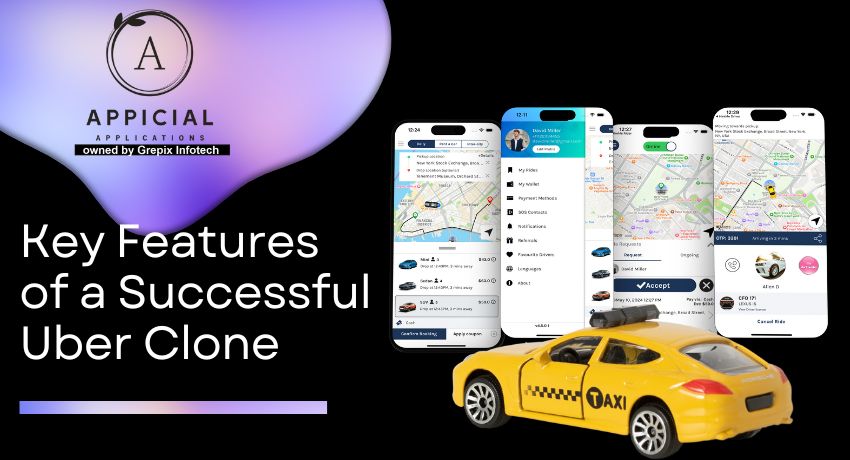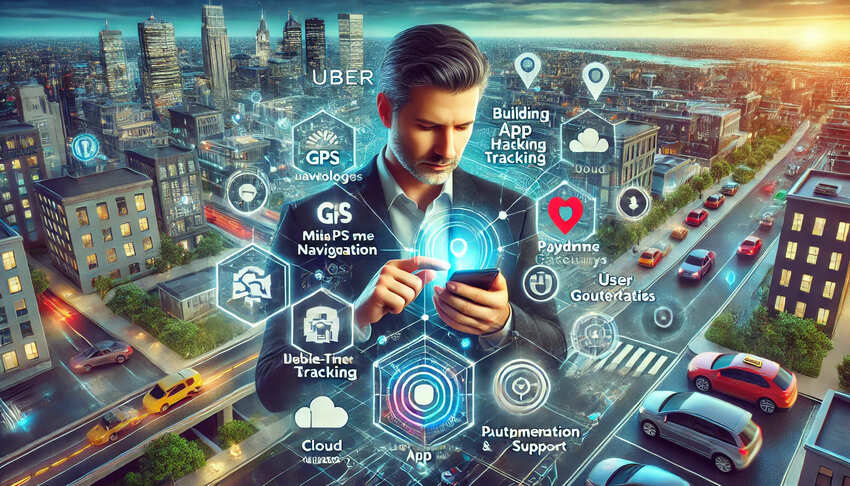
What Makes a Successful Uber Clone? Key Features and Technologies
In today’s fast-paced digital world, ride-sharing services have become an indispensable part of urban mobility. Among these, Uber has set a significant benchmark, combining convenience with technology to offer seamless service. Given its immense success, it’s no surprise that entrepreneurs are eager to emulate Uber’s business model. Creating a successful Uber clone involves more than just copying the idea; it requires a deep understanding of the key features and the latest technologies that make Uber stand out. In this blog, we delve into these crucial elements that can help launch a successful Uber clone, ensuring it is well-equipped to meet user demands and industry standards.
The blog discusses essential features and technologies needed to create a successful Uber clone. Key features include real-time tracking using robust GPS integration, multiple payment options with secure gateways, and a rating and review system for quality assurance. Technological foundations such as GPS for location tracking, payment gateway integrations for diverse payment methods, and cloud computing for scalability are vital. These elements enhance user experience, operational efficiency, and ensure the app meets industry standards. By incorporating these features and technologies, an Uber clone can offer a seamless, secure, and efficient service, positioning it to succeed in the competitive ride-sharing market.
Key Features of a Successful Uber Clone

Creating a successful Uber clone involves integrating several key features that enhance user experience, ensure operational efficiency, and maintain competitive edge. These features not only help in managing the day-to-day operations but also in building trust and reliability among users.
Real-Time Tracking
One of the most critical features for any ride-sharing app is real-time tracking. This functionality allows passengers to track their ride from the moment they book it to the time it arrives. Similarly, it enables drivers to navigate and track the best routes to the passenger’s location and their destination. Real-time tracking is fundamental as it enhances the safety of the users by letting them know exactly where their drivers are at any given time, and also, it provides peace of mind to the passengers’ loved ones.
For the real-time tracking to be effective, integration with robust mapping and geolocation technology is essential. It should provide accurate and concise paths and should be capable of updating in real time to account for changes in traffic and other conditions. This feature relies heavily on GPS technology, which should be seamlessly integrated into the app’s framework.
Multiple Payment Options
To ensure convenience and cater to a broad audience, a successful Uber clone needs to support multiple payment options. These options might include traditional methods such as cash and credit/debit cards, as well as modern methods like e-wallets and cryptocurrency. This variety allows customers to choose their preferred payment method, enhancing user satisfaction and accessibility.
Secure payment gateways are essential to support all these payment forms. These gateways must not only provide seamless and fast transactions but also ensure high levels of security to protect user data against fraud and theft. Additionally, the ability to choose tips, split fares, and receive electronic receipts makes the payment process smoother and user-friendly.
Rating and Review System
A rating and review system is crucial in maintaining the quality and trustworthiness of the service provided. This feature allows passengers to rate their experience with the driver and the ride and write a review if they wish. Likewise, drivers can rate passengers, which helps in maintaining a respectful and safe environment for both parties.
The review system should be simple yet detailed enough to provide useful feedback. A five-star rating system, along with the option to add comments, can effectively work to provide insights not only to other users but also to the administration for monitoring and improving their services. Regular monitoring and review of feedback can help the service provider to take necessary actions against any reported issues, thus maintaining high standards of service.
Technologies for Building a Successful Uber Clone

The backbone of any successful mobile application, including an Uber clone, lies in its technological foundation. The right technology stack not only enables the app to operate smoothly but also scales as the business grows.
GPS and Location-Based Services
GPS (Global Positioning System) is essential for any ride-sharing app as it enables the core functionalities like real-time tracking and route optimization. Location-Based Services (LBS) use real-time geo-data from a mobile device or smartphone to provide information, entertainment, or security.
Integrating these technologies involves using APIs that can fetch and handle geographic data efficiently. Google Maps and Apple Maps are popular choices that offer extensive support with their APIs for embedding maps and fetching locations, routes, and traffic data. It's crucial to ensure that the GPS system is highly responsive and provides real-time updates for the effectiveness of the real-time tracking feature discussed earlier.
Also Read: Best Uber Clone App Guide for Your Business Success
Payment Gateways Integration
To support multiple payment options, integrating reliable payment gateways is a must. These gateways facilitate various payment processes and handle the transactions securely. Technologies like Stripe, PayPal, and Braintree offer comprehensive solutions that can handle different payment methods including credit/debit cards and e-wallets.
Each payment gateway has its features, such as ease of integration, security measures, payment processing speeds, and compatibility with different currencies and countries. Choosing the right gateway will depend on the specific needs of the market the app is targeting and the types of payment methods preferred by the users.
Cloud Computing
Cloud computing plays a pivotal role in modern mobile application development, particularly for applications that require high scalability and reliability like a ride-sharing service. The cloud provides a flexible and efficient way to manage data, handle large volumes of user requests, and scale as the number of users grows.
Utilizing services like Amazon Web Services (AWS), Microsoft Azure, or Google Cloud Platform can offer powerful computing capabilities, extensive database storage, and enhanced security features. These services ensure that app performance is maintained at optimal levels and can handle surges in user activity smoothly and efficiently.
By leveraging these technologies, an Uber clone can deliver a seamless, secure, and efficient experience to its users, thereby enhancing the overall user satisfaction which is at the core of any successful service-oriented business.
Conclusion
In our journey of understanding what makes a successful Uber clone, we have explored various indispensable features and cutting-edge technologies. From its intuitive user interface to reliable payment integrations and advanced geolocation features, the keys to a successful ride-sharing app lie in its ability to provide security, efficiency, and seamless user experiences. As emerging technologies continue to evolve, the potential to innovate within the ride-sharing industry expands, promising even more sophisticated and user-friendly solutions in future endeavors. Embracing these features and technologies not only sets the foundation for a successful Uber clone but also paves the way for it to thrive in a competitive market.
Launch your vision with our mobile app development company, where innovation meets excellence to create cutting-edge mobile solutions.





